The NLPR_MCT dataset consists of four subsets corresponding to different non-overlapping multi-camera networks. Please download the ground truth annotation files of the NLPR_MCT dataset from here. You can download all the videos of the NLPR_MCT dataset via aliyuncs or download single videos one by one from the links in each subset. Please install the newest version of the Xvid decoder to open the video files in this dataset.
Dataset 1: Three-camera network with non-overlapping views
This dataset contains three synchronous videos from three non-overlapping cameras. Two are outdoor and one is indoor. The illumination between outdoor and indoor scenarios varies greatly. The problem of occlusion is serious in the view of Camera 3. The layout is shown in Figure 1 (a). The field of view of each camera is shown in Figure 1 (b). Figure 1 (c) shows the corresponding connection matrix T in which “1” means objects can move between entry/exit areas. Some details are shown as follows.
- Duration: 20 min
- Resolution: 320×240
- Frame rate: 20fps
- Number of persons: 235
- Format: avi
- Codec: MPEG-4(Xvid)
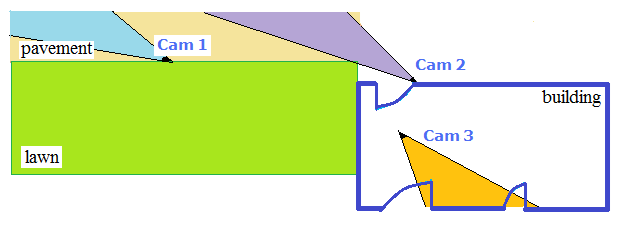 | |
 | 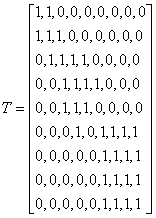 |
Dataset 2: Three-camera network with non-overlapping views
This dataset contains three synchronous videos from three non-overlapping cameras. The layout and the field of view of each camera are the same as Dataset 1. The problem of occlusion is much more serious than Dataset 1. Some details are shown as follows.
- Duration: 20 min
- Resolution: 320×240
- Frame rate: 20fps
- Number of persons: 255
- Format: avi
- Codec: MPEG-4(Xvid)
Dataset 3: Four-camera system with non-overlapping views
This dataset contains four synchronous videos from four non-overlapping cameras. All cameras are installed indoors. The illumination across cameras varies greatly, especially between Camera 1 and Camera 2. The problem of occlusion is serious in the view of Camera 1. The layout is shown in Figure 2 (a). The field of view of each camera and the corresponding connection matrix T is shown in Figure 2 (b) and (c) separately. Some details are shown as follows.
- Duration: approximately 4 min
- Resolution:320×240
- Frame rate: 25fps
- Number of persons: 14
- Format: avi
- Codec: MPEG-4(Xvid)
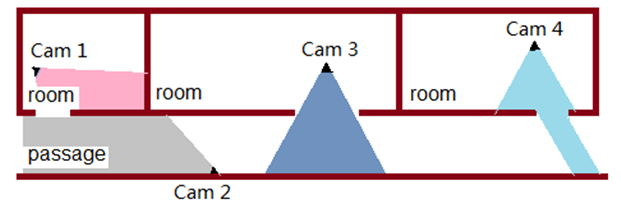 | |
 |  |
Dataset 4: Five-camera system with non-overlapping views
Download: Cam1 Cam2 Cam3 Cam4 Cam5
This dataset contains five synchronous videos from five non-overlapping cameras. Four cameras are installed outdoors and one is installed indoors. The illumination across cameras varies greatly, especially between Camera 1 and Camera 2. Sudden changes in the illumination occur in some scenarios, such as Camera 5. The layout is shown in Figure 3 (a). The field of view of each camera and the corresponding connection matrix T is shown in Figure 3 (b) and (c) separately. Some details are shown as follows.
- Duration: approximately 25 min
- Resolution:320×240
- Frame rate: 25fps
- Number of persons: 49
- Format: avi
- Codec: MPEG-4(Xvid)
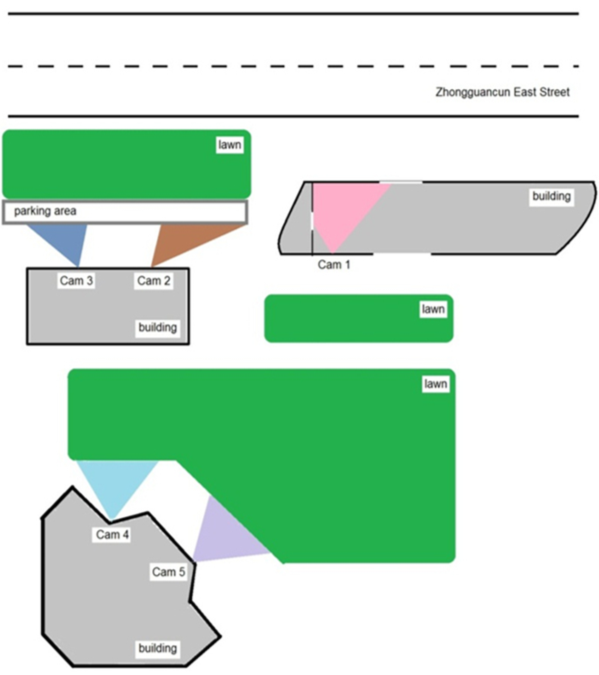 |  |
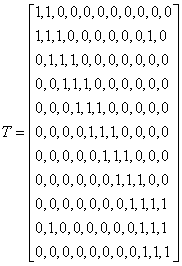 |